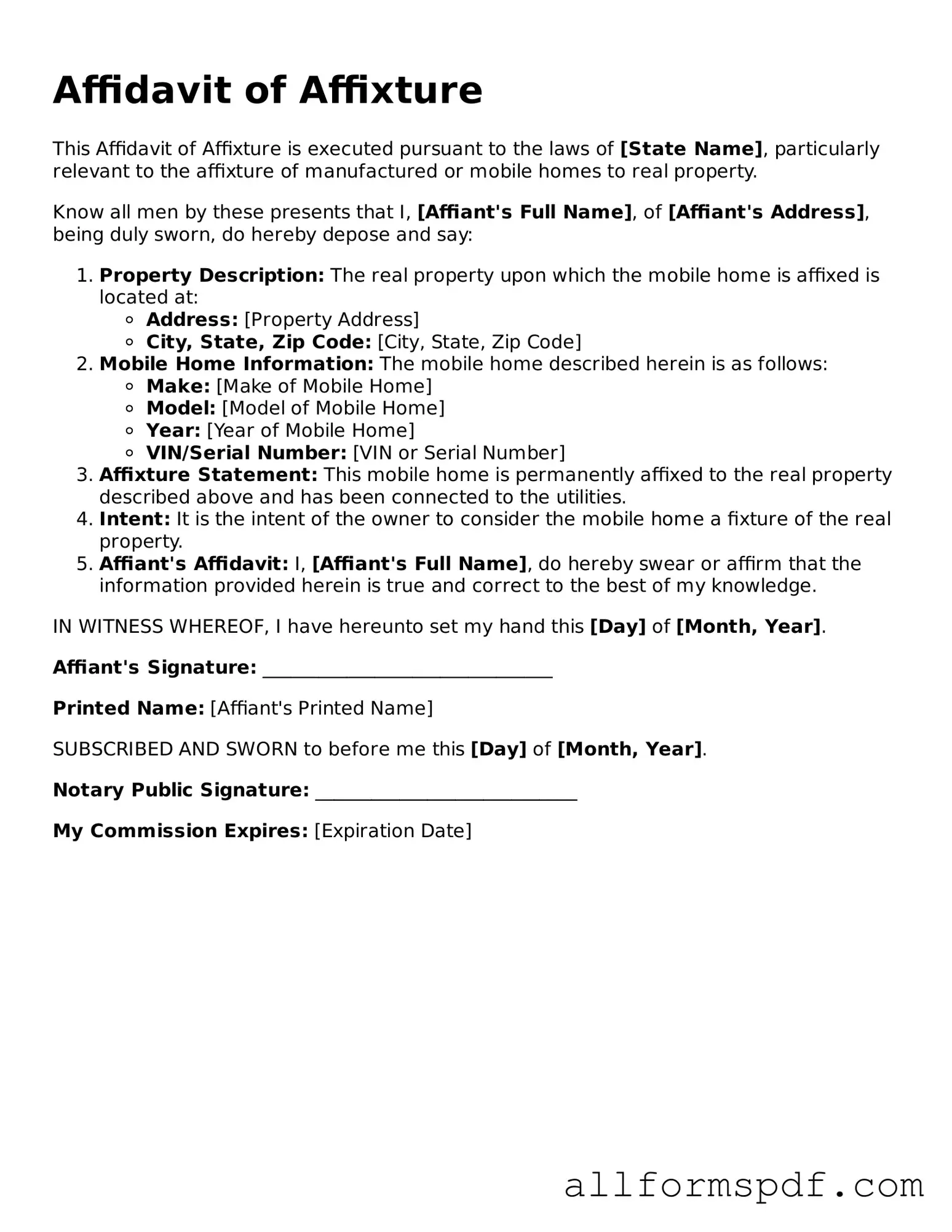Filling out the Affidavit of Affixture form can be a straightforward process, but many individuals make common mistakes that can lead to delays or complications. Understanding these pitfalls can help ensure that your application is processed smoothly.
One frequent error is providing incomplete information. Each section of the form requires specific details, such as the property address and the owner's name. Omitting any of this crucial information can result in the form being rejected or returned for correction. Always double-check that every required field is filled out before submitting.
Another mistake people often make is using incorrect or outdated information. This includes details about the property, such as its legal description or the identification number. If this information does not match official records, it can create significant issues. It is essential to verify that all data is current and accurate to avoid potential legal disputes.
Many individuals also overlook the importance of signatures. The Affidavit of Affixture must be signed by the property owner or an authorized representative. Failing to sign the document, or having an unauthorized person sign it, can invalidate the affidavit. Make sure to review the signature requirements carefully to ensure compliance.
People sometimes neglect to provide supporting documentation as required. This can include proof of ownership or other relevant documents that substantiate the claims made in the affidavit. Without these attachments, the form may not be accepted. Always check the requirements for supporting documents and include everything needed to strengthen your application.
Lastly, some individuals fail to keep copies of their submitted forms. Having a record of what was sent can be invaluable if any issues arise later. It allows for easy reference and can help clarify any misunderstandings that may occur during the processing of the affidavit. Always make copies of your completed forms and any accompanying documentation before submission.
